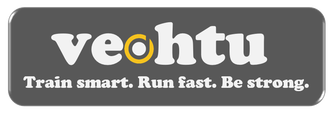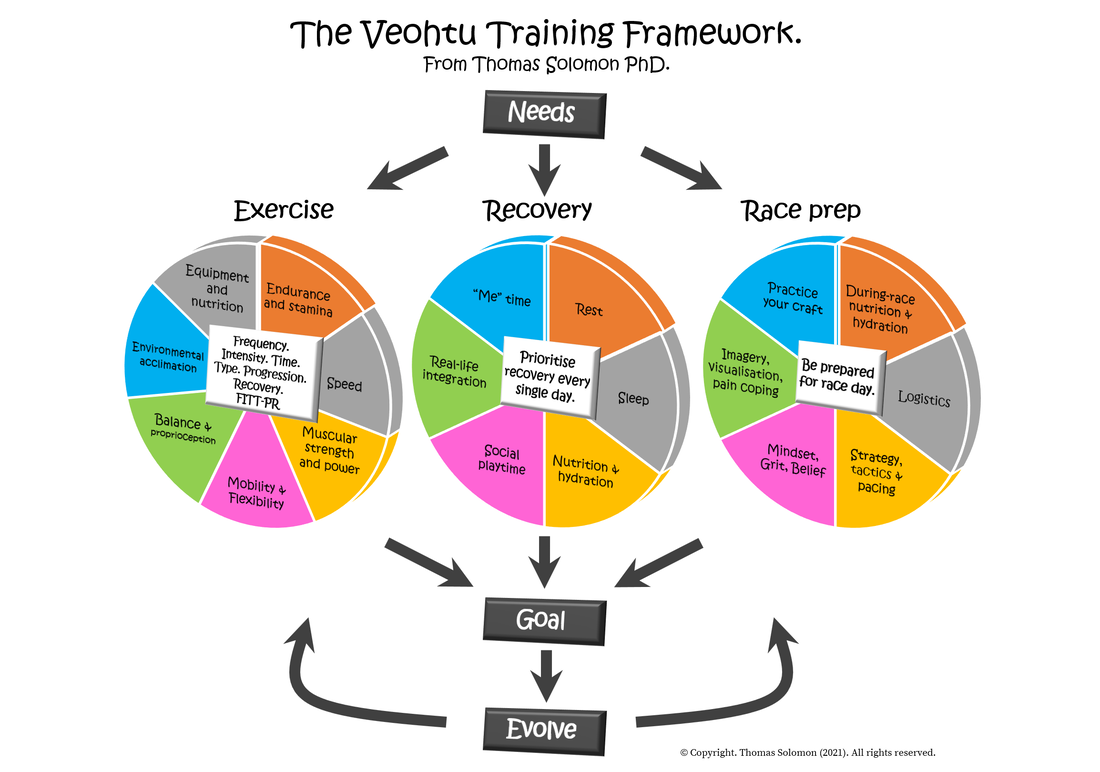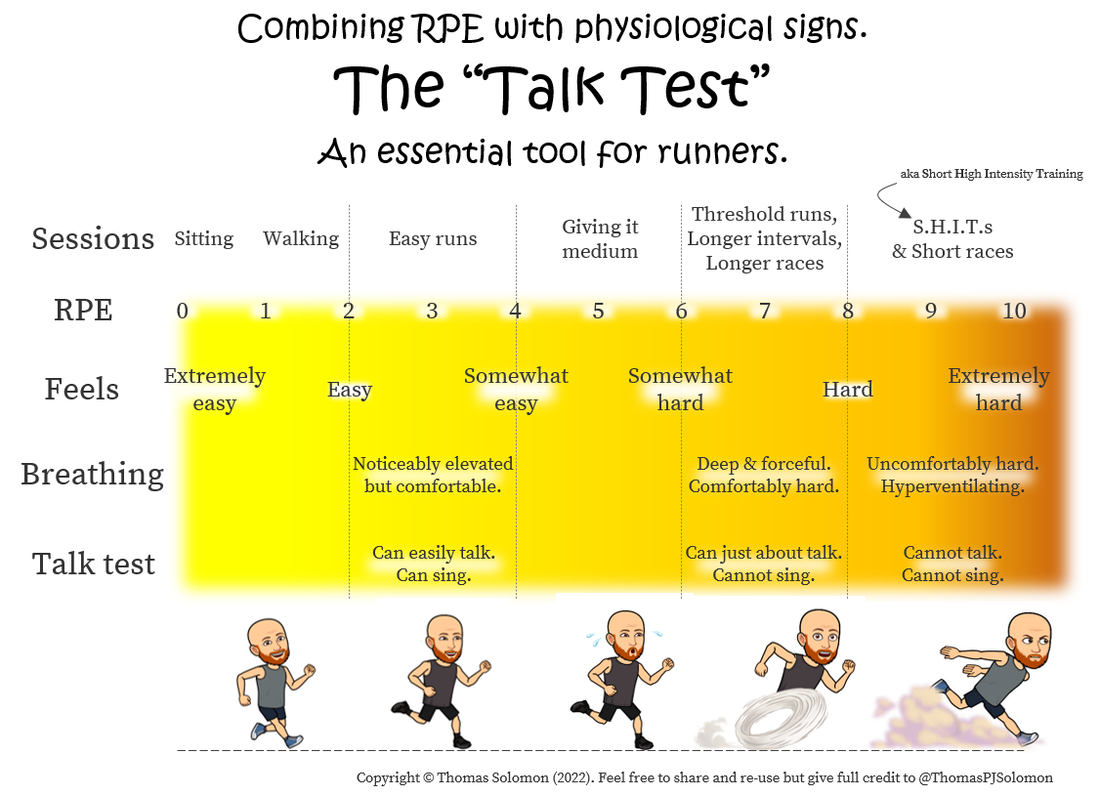Education for runners and endurance athletes.

Learn how to train smart, run fast, and be strong
with Thomas Solomon'sTrain Smart Framework.
Scroll through the flashcards to empower yourself to level up.
This is the way. This is the Veohtu way.
Tip #1
How to run smart.
Thomas Solomon PhD.
For a deep-dive on this topic, visit
Tip #2
How to run fast.
Thomas Solomon PhD.
For a deep-dive on this topic, visit
Tip #3
How to strength train and run strong.
Thomas Solomon PhD.
For a deep-dive on this topic, visit
Tip #4
How to recover and adapt.
Thomas Solomon PhD.
For a deep-dive on this topic, visit
Tip #5
How to train.
Thomas Solomon PhD.
For a deep-dive on this topic, visit
Tip #6
How to manage your training load.
Thomas Solomon PhD.
For a deep-dive on this topic, visit
Tip #7
How to progress your training load.
Thomas Solomon PhD.
For a deep-dive on this topic, visit
Tip #8
Should you train today?
Thomas Solomon PhD.
Training hard is not about running through pain, chronic fatigue, or emotional stress; training hard is about running smart and knowing when to rest. So, each morning ask yourself six simple questions:
 Are you currently feeling totally exhausted, run-down, or extremely fatigued?
Are you currently feeling totally exhausted, run-down, or extremely fatigued?
 Over the last 1 to 2 nights, have you slept poorly?
Over the last 1 to 2 nights, have you slept poorly?
 Over the last 1 to 2 days, have you eaten poorly and/or consumed more than 1 alcoholic drink per day?
Over the last 1 to 2 days, have you eaten poorly and/or consumed more than 1 alcoholic drink per day?
 Over the last 1 to 2 days, have you been under acute emotional stress (from work, or life events, including training/racing)?
Over the last 1 to 2 days, have you been under acute emotional stress (from work, or life events, including training/racing)?
 Do you currently have any muscle or joint soreness that has lasted more than 24 hours?
Do you currently have any muscle or joint soreness that has lasted more than 24 hours?
 Do you currently have an injury that is causing you pain and discomfort?
Do you currently have an injury that is causing you pain and discomfort?
Use my "Should I train today" tool on a daily basis → veohtu.com/ShouldYouTrainToday.
veohtu.com/ShouldYouTrainToday.
Use my "Should I train today" tool on a daily basis →
Tip #9
How to sleep well.
Thomas Solomon PhD.
For a deep-dive on this topic, visit
Tip #10
How to eat daily.
Thomas Solomon PhD.
For a deep-dive on this topic, visit
Tip #11
How to hydrate.
Thomas Solomon PhD.
For a deep-dive on this topic, visit
Tip #12
How to nail your nutrition in and around your training.
Thomas Solomon PhD.
For a deep-dive on this topic, visit
Tip #13
How to nail your nutrition for high performance on race day.
Thomas Solomon PhD.
For a deep-dive on this topic, visit
Tip #14
How to choose supplements and recovery devices, pills, and potions.
Thomas Solomon PhD.
For a deep-dive on this topic, check out my
Tip #15
How to run clean.
Thomas Solomon PhD.
For a deep-dive on this topic, check out my
Tip #16
How to keep cool in the heat.
Thomas Solomon PhD.
But,
And…
For a deep-dive on this topic, visit
Tip #17
How to heat acclimate.
Thomas Solomon PhD.
Heat acclimation can be achieved by running at a low to moderate intensity in a 30 to 40°C heat chamber for up to 60 to 90 mins, every day for 2 weeks. However, running in the heat lowers your absolute workload because heat makes you slow down. It is, therefore, difficult to train properly and you might actually detrain using this approach. An alternative and effective approach that does not interrupt your normal training is "post-exercise heat exposure", which can be achieved as follows:
 Sit in a 100°C dry-air sauna or a 40°C hot tub or hot bath immediately after your sessions every day for 2 weeks, starting about 2–3 weeks before your target race.
Sit in a 100°C dry-air sauna or a 40°C hot tub or hot bath immediately after your sessions every day for 2 weeks, starting about 2–3 weeks before your target race.
 Start with 10 minutes in the sauna/tub/bath on Day 1 and gradually increase the time-in-heat over the first few days until each heat exposure is 30–40 mins.
Start with 10 minutes in the sauna/tub/bath on Day 1 and gradually increase the time-in-heat over the first few days until each heat exposure is 30–40 mins.
 If you feel dizzy or nauseous, get out of the heat and cool down.
If you feel dizzy or nauseous, get out of the heat and cool down.
 Bring water into the sauna, hot tub, or hot bath so you can drink-to-thirst to stay adequately hydrated.
Bring water into the sauna, hot tub, or hot bath so you can drink-to-thirst to stay adequately hydrated.
For a deep-dive on this topic, visit veohtu.com/heatacclimation.
veohtu.com/heatacclimation.
For a deep-dive on this topic, visit
Tip #18
How to prevent and/or stop muscle cramps.
Thomas Solomon PhD.
For a deep-dive on this topic, visit
Tip #19
How to resist fatigue on race day.
Thomas Solomon PhD.
and
For a deep-dive on this topic, visit

Equality in education, health, and sustainability is important to me. I was lucky to be born into a social welfare system where higher education was free. Sadly, that is no longer true. Consequently, to provide access to exercise science and sports nutrition education to folks from all walks of life, I publish freely accessible high-quality exercise science and nutritional science content.


